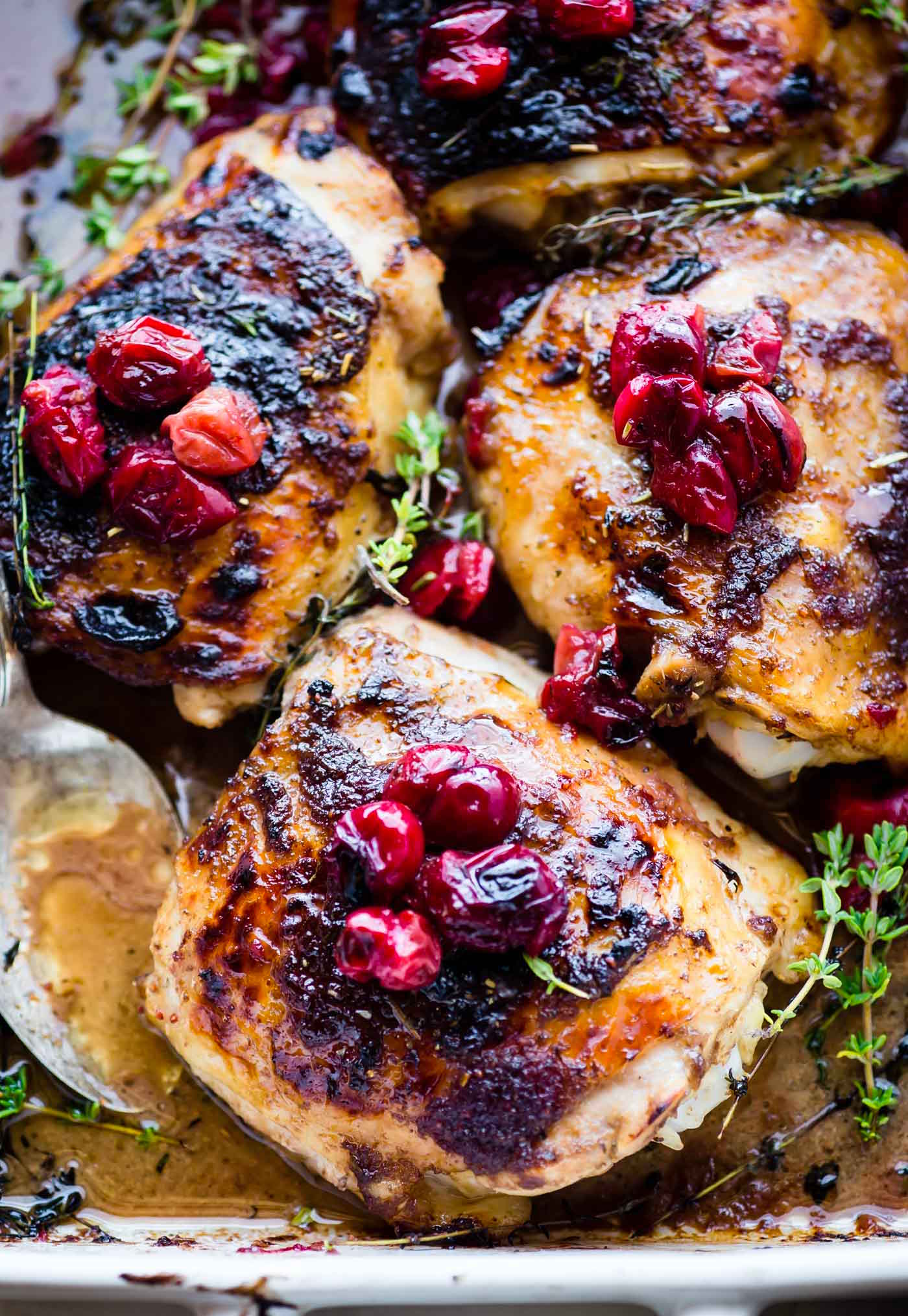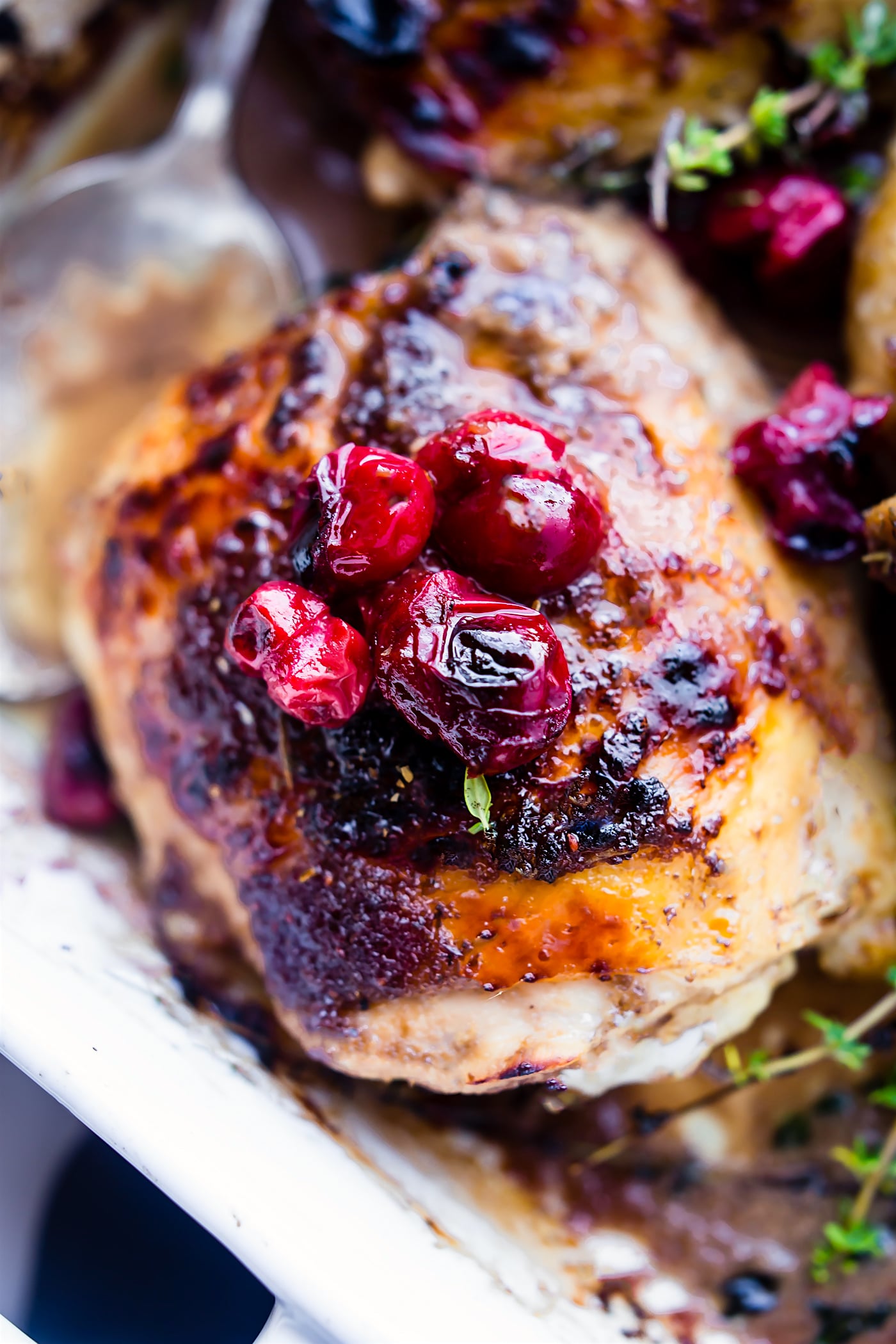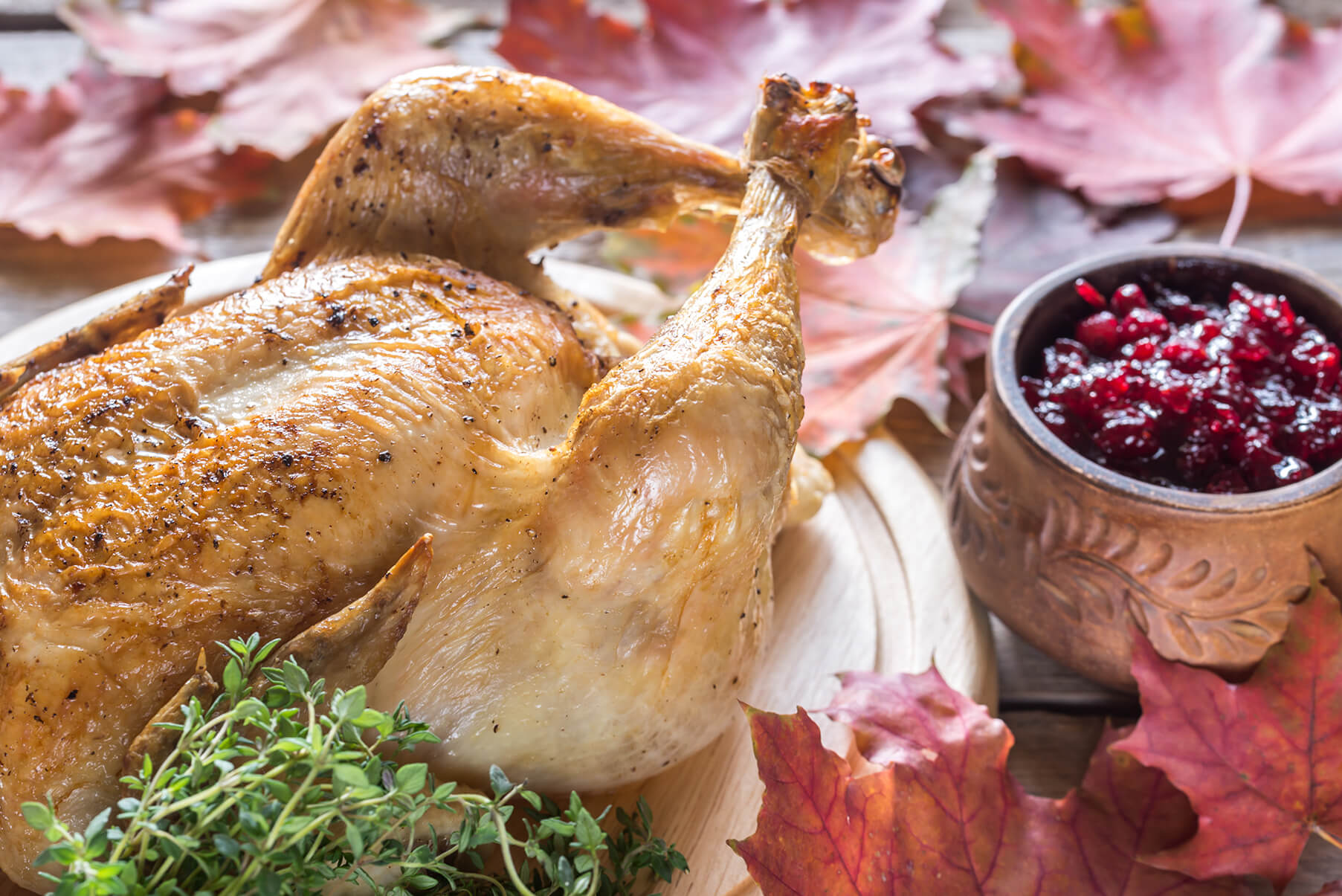
A Taste of Heritage: Traditional Native American Roasted Chicken with Cranberry Sauce
The story of food is deeply interwoven with the story of people. In the rich tapestry of Native American culinary traditions, certain dishes stand out, not just for their delicious flavors, but for the history, ingenuity, and connection to the land they represent. Among these, the concept of roasted chicken, often accompanied by the tart sweetness of native cranberries, offers a glimpse into a heritage shaped by seasonal bounty and resourceful preparation. While a singular, universal "traditional Native American roasted chicken" recipe doesn’t exist due to the vast diversity of tribes and their environments, we can explore the underlying principles and common elements that would have characterized such a meal.
The arrival of European chickens and the subsequent integration into Native American diets marked a significant culinary shift. However, the essence of roasting, of slow-cooking food over an open fire or in a rudimentary oven, was a practice deeply ingrained in indigenous cooking for centuries. This method of preparation was not just about cooking; it was about maximizing flavor, tenderizing tougher cuts, and preserving the essence of the ingredients.
The Foundation: The Bird and Its Preparation

Before the advent of domesticated poultry, Native American diets were rich in game birds like wild turkey, quail, and grouse. These birds, leaner and often more intensely flavored than their modern domesticated counterparts, would have been prepared with a deep understanding of their unique characteristics. Roasting was a natural fit, allowing the fat to render, basting the meat and creating a succulent, flavorful outcome.
When chickens were introduced, they were likely integrated into existing roasting techniques. The preparation would have been straightforward and focused on the natural flavor of the bird. Seasoning, if used, would have been simple and derived from the immediate environment. Wild herbs like sage, thyme, or rosemary, readily available in various regions, would have been rubbed onto or stuffed into the cavity. Salt, often obtained through trade or evaporation of mineral-rich waters, would have been a prized seasoning.
The roasting process itself would have varied. In many traditional settings, a spit roast over an open fire was common. This method allowed for even cooking and constant basting as the fat dripped down. Alternatively, if a pit oven or a rudimentary stone oven was available, the chicken could have been slow-roasted to perfection. The key was patience and an understanding of heat management, skills honed over generations.
The Scarlet Jewel: Cranberries Enter the Scene
The inclusion of cranberries, or "ibimi" (a term used by the Wampanoag people, meaning "sour berry"), is a quintessential element that elevates a simple roasted chicken into a distinctly Native American-inspired dish. Cranberries are native to North America and were a vital food source for many indigenous communities long before European arrival. Their tartness, high vitamin C content, and ability to be preserved (often by freezing in winter or drying) made them an invaluable ingredient.
The pairing of roasted fowl with a tart berry sauce is a classic combination found in many cultures. For Native Americans, cranberries offered a natural, vibrant counterpoint to the richness of roasted meats. The sauce would have been simple, allowing the inherent flavor of the cranberries to shine. Boiling the berries with a touch of water would have been the primary method. Sweetening would have been minimal and dependent on availability. Maple syrup, a true indigenous sweetener, would have been the most likely candidate, offering a subtle, earthy sweetness that complements the tartness of the berries without overpowering them.
Some traditions might have incorporated other native fruits or sweeteners, depending on the region. Wild honey, though less common and harder to procure, could have been used. The goal was to create a balance – a sauce that cut through the richness of the chicken, adding a burst of bright, refreshing flavor.
Beyond the Plate: Cultural Significance and Connection

The act of preparing and sharing a meal like roasted chicken with cranberry sauce was more than just sustenance; it was a cultural practice. Food preparation was often a communal activity, bringing families and communities together. The harvest of cranberries, for instance, was a significant event, requiring cooperation and often involving elaborate rituals and celebrations.
The ingredients themselves held deep meaning. The chicken, once a symbol of European introduction, became integrated into the indigenous food system. Cranberries, however, were a gift from the land, a tangible representation of its abundance and resilience. The act of roasting over fire connected the meal to the primal elements, a continuation of ancestral practices.
This meal, therefore, embodies a spirit of adaptation and continuity. It speaks to the ability of Native American cultures to embrace new ingredients while honoring their established culinary philosophies and their profound connection to the natural world.
Reimagining the Tradition Today
While the exact recipes of centuries past are lost to time, we can honor this culinary heritage by recreating dishes that evoke its spirit. A modern interpretation of traditional Native American roasted chicken with cranberry sauce focuses on simple, quality ingredients, mindful preparation, and the harmonious balance of flavors.
The chicken can be a free-range bird, chosen for its superior flavor. The seasoning can be inspired by wild herbs, while the cranberry sauce remains true to its origins with minimal sweetness, allowing the natural tartness and the subtle notes of maple syrup to create a complex yet refreshing accompaniment.
This dish serves as a delicious reminder of the ingenuity, resourcefulness, and deep respect for nature that characterized Native American culinary traditions. It’s a taste of heritage, a connection to the past, and a celebration of the enduring flavors that have sustained and nourished people for generations.
Recipe: Traditional-Inspired Native American Roasted Chicken with Cranberry Sauce
This recipe is an interpretation, drawing inspiration from the principles and ingredients likely used in traditional Native American cooking. It emphasizes simplicity, natural flavors, and the harmonious pairing of roasted chicken with tart cranberries.
Yields: 4-6 servings
Prep time: 20 minutes
Cook time: 1 hour 30 minutes to 2 hours
Ingredients:
For the Roasted Chicken:
- 1 whole free-range chicken (approximately 3-4 pounds / 1.5-1.8 kg)
- 2 tablespoons olive oil or melted rendered animal fat (like duck fat or bacon fat, if available and desired for a more traditional richness)
- 1 teaspoon dried sage (or 1 tablespoon fresh sage leaves, chopped)
- 1 teaspoon dried thyme (or 1 tablespoon fresh thyme leaves)
- 1/2 teaspoon sea salt (or to taste)
- 1/4 teaspoon freshly ground black pepper (or to taste)
- 1 small onion, quartered
- 2-3 sprigs fresh rosemary (optional, if available)
For the Cranberry Sauce:
- 12 ounces (about 3 cups / 340g) fresh or frozen cranberries
- 1/4 cup water
- 2-4 tablespoons pure maple syrup (adjust to taste, start with less and add more if desired)
- Pinch of sea salt
Equipment:
- Roasting pan with a rack
- Small saucepan
- Wooden spoon
Instructions:
1. Prepare the Chicken:
- Preheat your oven to 400°F (200°C).
- Remove the chicken from its packaging. Remove any giblets or neck from the cavity. Pat the chicken thoroughly dry inside and out with paper towels. This step is crucial for achieving crispy skin.
- In a small bowl, combine the olive oil (or rendered fat), dried sage, dried thyme, sea salt, and black pepper. If using fresh herbs, chop them finely and mix them in.
- Rub the herb and spice mixture all over the chicken, ensuring it’s evenly coated. Gently lift the skin over the breast and thighs and rub some of the mixture underneath for extra flavor.
- Stuff the quartered onion and sprigs of rosemary (if using) into the cavity of the chicken.
- Truss the chicken legs together with kitchen twine if desired. This helps the chicken cook more evenly.
2. Roast the Chicken:
- Place the prepared chicken on the rack in the roasting pan, breast-side up.
- Roast for 20 minutes at 400°F (200°C).
- Reduce the oven temperature to 350°F (175°C).
- Continue roasting for another 1 hour to 1 hour 40 minutes, or until the internal temperature of the thickest part of the thigh (without touching the bone) reaches 165°F (74°C). The juices should run clear when the thigh is pierced with a fork or knife.
- Baste the chicken with its own juices from the roasting pan every 20-30 minutes. If the skin starts to brown too quickly, you can loosely tent the chicken with aluminum foil.
- Once cooked, remove the chicken from the oven and let it rest on a cutting board, loosely tented with foil, for at least 15-20 minutes before carving. This resting period allows the juices to redistribute throughout the meat, resulting in a more tender and moist chicken.
3. Make the Cranberry Sauce:
- While the chicken is resting, prepare the cranberry sauce.
- Combine the cranberries, water, and a pinch of sea salt in a small saucepan.
- Bring the mixture to a boil over medium-high heat, then reduce the heat to low and simmer, uncovered, for about 10-15 minutes, stirring occasionally. The cranberries will begin to pop and soften.
- Once the cranberries have softened and burst, stir in 2 tablespoons of maple syrup. Taste the sauce and add more maple syrup if you prefer it sweeter. Remember, traditional sauces were often quite tart.
- Continue to simmer for another 2-3 minutes until the sauce has thickened slightly.
- Remove from heat. The sauce will thicken further as it cools.
4. Serve:
- Carve the rested roasted chicken.
- Serve the chicken hot with a generous dollop of the cranberry sauce on the side.
- Optional traditional accompaniments could include roasted root vegetables (like squash or potatoes, if available in your region’s historical context), or wild rice.
Notes for Authenticity and Variation:
- Fat: If you can procure duck fat or rendered pork fat, using it instead of olive oil can add a richer, more traditional flavor profile.
- Herbs: Experiment with other wild herbs available in your region, such as wild mint or wild ginger, if you are familiar with foraging and identifying them safely.
- Sweetener: While maple syrup is ideal, a very small amount of honey could also be used if maple syrup is unavailable, though maple syrup is more historically accurate for many Eastern Woodlands tribes.
- Cooking Method: If you have access to an outdoor fire pit, a spit roast or a pit oven would be the most traditional cooking methods. Adjust cooking times accordingly.
- Cranberry Sauce Texture: Some prefer a chunkier sauce, while others like it smoother. You can mash some of the cranberries with the back of your spoon for a desired texture.
Enjoy this taste of heritage!


